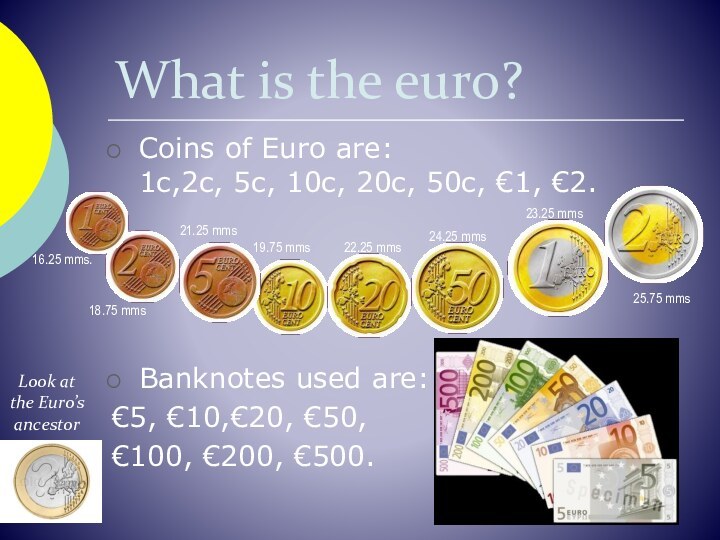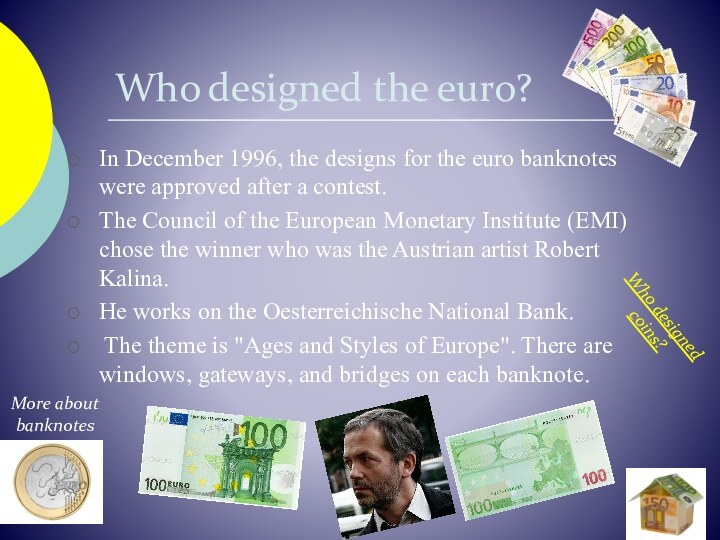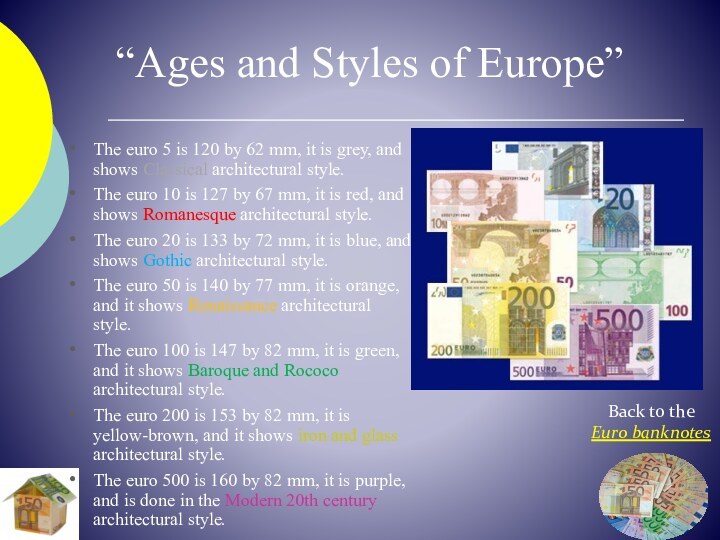the main menu
Euro - hyperlink
- extra information- answer the question
FindSlide.org - это сайт презентаций, докладов, шаблонов в формате PowerPoint.
Email: Нажмите что бы посмотреть


















Next page
25.75 mms
23.25 mms
24.25 mms
22.25 mms
19.75 mms
21.25 mms
18.75 mms
16.25 mms.
What are the disadvantages of using the euro?
More about banknotes
Who designed coins?
The common side of each euro 1, 2, and 5 cent coin has a design that shows Europe's place in the world.
The 20 cent euro is different because it isn't completely round. It has 7 little indentations. This shape is known as the Spanish Flower, a circle with 7 dents in a regular heptagon.
The 1 and 2 euro coin design shows the EU without borders.
Next page
“Ages and Styles of Europe”
Euro Designer Luc Luycx
His signature on all euro coins is visible as two L letters connected together (LL). On the 2-euro coin, this is visible under the O of the word EURO on the common side